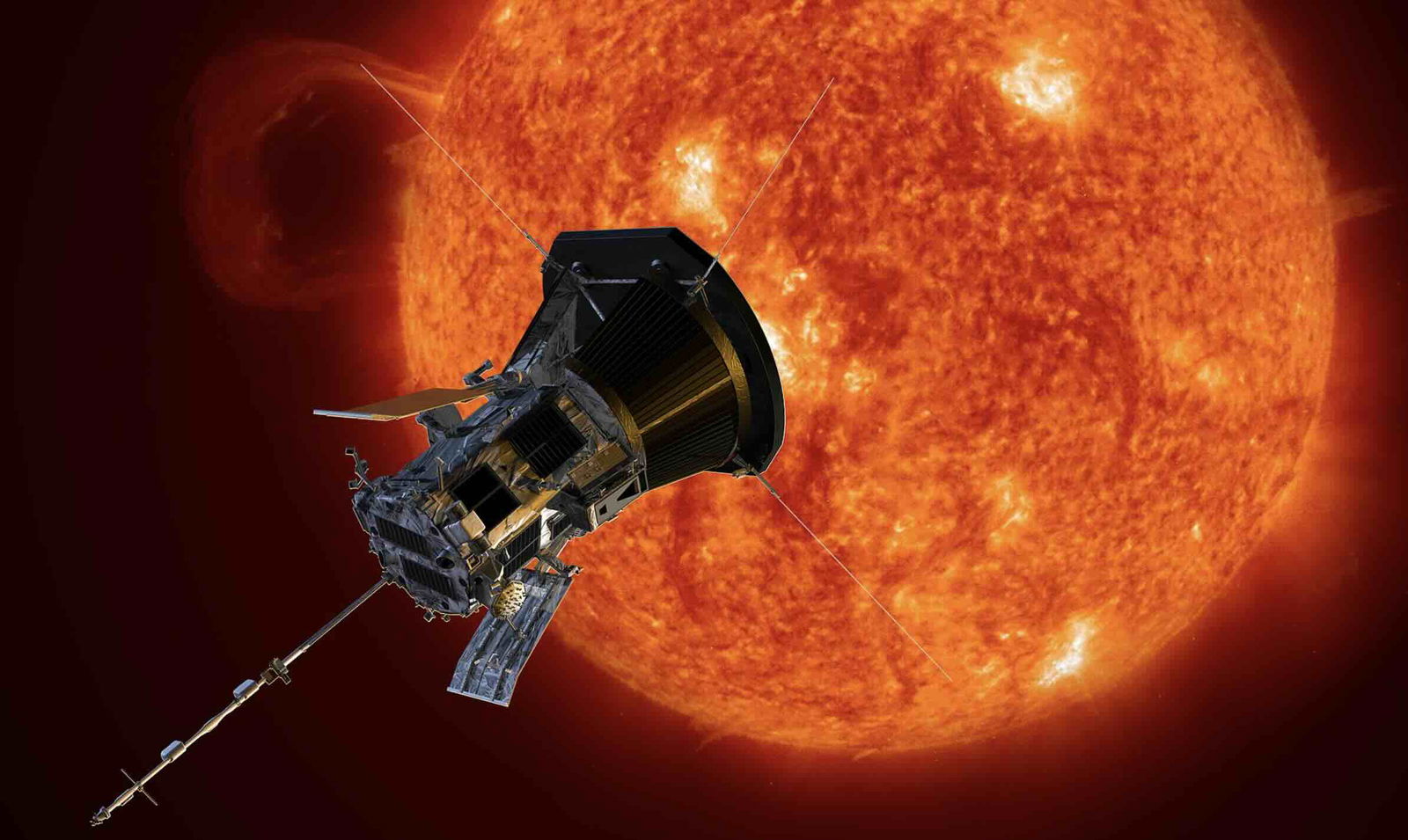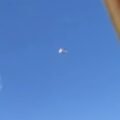NASA’s Parker Solar Probe, launched in 2018, dives into the Sun’s corona within ten times the radius of the Sun, placing it eight times closer to it than the orbit of Mercury. The spacecraft collects unprecedented data on the origin and evolution of the solar wind.
Suppose a spacecraft visiting from another civilization aimed to recharge its batteries. It could have approached the Sun similarly and used photovoltaic cells to maximize the energy harvest, since the solar power per unit area drops inversely with distance squared.
One way to diagnose the composition of interstellar space trash, like the anomalous interstellar object `Oumuamua, is by using the hot Sun to vaporize them. Suppose their trajectories are not maneuvered by artificial propulsion like the Parker Solar Probe. In that case, the rate of interstellar “Sun-divers” can be calculated from the statistics of interstellar objects near Earth.
The rate of Sun-divers is significant – not just because the Sun is 110 times bigger than Earth but also because of gravitational focusing. The gravitational potential at the surface of the Sun is deeper by a factor of 210 compared to its value at the Earth-Sun separation. A similar factor characterizes the ratio between the square of the escape speed from the surface of the Sun and the square of the characteristic speed of interstellar objects.
Taking account of gravitational focusing, I calculated in a paper with my former postdoc John Forbes that `Oumuamua-like objects would collide with the Sun once every 30 years. `Oumuamua had a diameter of about 160 meters, comparable to the pre-launch height of Starship, the largest rocket ever built by humans. The appearance rates of meteors, namely space objects impacting the Earth, imply that there are many more small ones than there are large ones. As a rule of thumb, the inferred abundance of solar system rocks scales as the inverse of their mass. If the same applies to interstellar objects, as argued in a paper I wrote with my former student Amir Siraj, then meter-scale interstellar Sun-divers are a few million times more abundant than `Oumuamua was.
Based on NASA’s CNEOS catalog of fireballs, the impact rate on Earth of meter-scale interstellar meteors, like IM1 or IM2, is once per decade. This suggests that a few million of them are within the Earth’s orbit around the Sun. In this case, their collision rate with the Sun would be once every 4 minutes!
Meter-size interstellar Sun-divers release the equivalent energy output of ten Hiroshima bombs upon impact on the Sun. But even before entering the Sun, they would get vaporized by the enormous radiation intensity of thousands of degrees Kelvin. By monitoring the spectrum of the evaporated gases with an Earth-based telescope, one could identify the spectral fingerprints of different elements and infer the composition of these interstellar Sun-divers.
The challenge of doing so is that only one in a thousand Sun-divers is interstellar in origin. However, one could separate interstellar objects from solar system rocks or comets by measuring their velocities and inferring whether they were unbound by the Sun’s gravity at large distances. A prime observatory for this purpose is the 4-meter Inouye Solar Telescope near the summit of Haleakala in Maui, Hawaii. Coincidentally, this is the same mountaintop where the Pan-STARRS observatory, which discovered `Oumuamua, is located. I was fortunate to visit this observatory in July 2017 when the solar telescope was constructed, just a few months before `The Pan-STARRS observatory spotted ‘Oumuamua. In principle, the Webb telescope might also be able to constrain the surface composition of interstellar objects from their infrared emission spectrum.
Alternative methods to study the composition of interstellar objects are much more expensive. The Pacific Ocean expedition I led in June 2023 targeted the chemical composition of the interstellar meteor IM1. This task cost 1.5 million dollars and required a full year of analysis, the findings of which were summarized in a detailed paper by our research team.
The discovery of an unusual chemical composition for BeLaU spherules at IM1’s site motivates our next expedition. Within a year, we hope to search for bigger pieces of IM1, which would allow us to study the material properties and nature of this anomalous interstellar meteor, which was moving faster than 95% of all stars in the vicinity of the Sun and had material strength tougher than that of iron meteorites.
Based on recent data about the fragmentation of iron meteorites of the same size, IM1’s fireball should have left behind an order of 10,000 fragments of mass ~0.5 grams (or a diameter of ~0.5 centimeter), about 1,000 fragments of mass ~15 grams (or a diameter of ~1.5 centimeters), about 100 fragments of mass ~0.5 kilogram (or a diameter of ~5 centimeters), about ten fragments of mass ~4 kilograms (or a diameter of ~9 centimeters), and one fragment of mass ~20 kilograms (or a diameter of ~16 centimeters). We hope to find some of these in our next expedition, which will cost 6.5 million dollars.
Another approach for studying the material composition of interstellar objects is to rendezvous with them along their trajectory as they approach Earth. Our detailed calculations indicate that a maneuvering speed of tens of kilometers per second would be required, well above the few kilometers per second capability offered by the European-Japanese Comet Interceptor, planned for lunch in 2029.
Finally, there is a possibility of observing maneuvering interstellar probes in the form of Unidentified Anomalous Phenomena (UAPs) near Earth. The Director of National Intelligence delivered three reports about UAPs, but it is unclear from publicly available data whether the reported UAPs cannot be all human-made. The main challenge in attending to data-poor reports is avoiding confusion with existing military programs to retrieve and reverse engineer technologies found in crash sites of flying objects manufactured by adversarial nations, which could involve bodies of human pilots. Government agencies might label classified data retrieved by these programs as UAPs to confuse adversaries or discredit the leakage of classified information.
Fortunately, science is better than politics. The Galileo Project observatories take a scientific approach to resolving any confusion. They are collecting data on UAPs in the sky and will soon release the findings in a series of papers. Also fortunate for science is that neither the sky nor our oceans are classified.
Avi Loeb is the head of the Galileo Project, founding director of Harvard University’s – Black Hole Initiative, director of the Institute for Theory and Computation at the Harvard-Smithsonian Center for Astrophysics, and the former chair of the astronomy department at Harvard University (2011-2020). He is a former member of the President’s Council of Advisors on Science and Technology and a former chair of the Board on Physics and Astronomy of the National Academies. He is the bestselling author of “Extraterrestrial: The First Sign of Intelligent Life Beyond Earth” and a co-author of the textbook “Life in the Cosmos”, both published in 2021. His new book, titled “Interstellar”, was published in August 2023.

